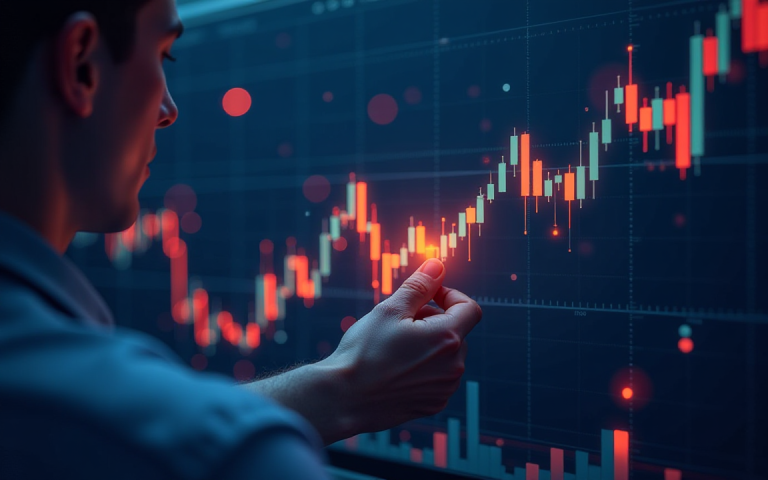Warren Buffett, whose name has become a synonym for the successful investor, has finally called it quits.
After running Berkshire Hathaway for six decades, Buffett announced on May 3 that he will step down at the end of 2025.
The billionaire investor, who turned 94 this year, announced the news during Berkshire Hathaway’s latest annual meeting in Omaha.
Even his chosen successor was surprised.
Buffett’s retirement now raises big questions about what happens next to the financial giant he built from scratch.
Why is Buffett stepping down now?
Buffett’s decision was unexpected but not entirely surprising.
Investors have speculated about his retirement for years, considering his age and declining opportunities in today’s expensive market.
Berkshire Hathaway is holding a record $348 billion in cash because Buffett simply cannot find attractive investments.
This amount of cash has never been seen before in Berkshire’s history, making Buffett’s reluctant investing stance clearer than ever.
Since early 2023, Buffett has sold stocks every quarter, totaling about $175 billion over the past ten quarters.
His biggest sell-off recently was in Apple, Berkshire’s largest single investment.
With valuations high, Buffett admitted at the meeting that:
“Things get extraordinarily attractive very occasionally.”
He made it clear he’s willing to wait, even if shareholders sometimes find the wait frustrating.
But waiting indefinitely isn’t realistic.
At 94, Buffett saw the moment had arrived. Instead of letting time make the choice, he decided to take action himself, ensuring a smoother transition.
Who is the successor, and why was he chosen?
Greg Abel, aged 62, will now take Buffett’s place as CEO.
Abel was born in Edmonton, Canada, and joined Berkshire Hathaway through its utility business.
He currently runs Berkshire’s non-insurance companies, including railroads, retail brands, energy firms, and more.
Abel is not an investor like Buffett; he’s known instead for successfully running businesses day-to-day.
Buffett and his longtime business partner, Charlie Munger, reportedly picked Abel years ago.
Munger, who died in 2023, once said Abel was even better at operating businesses than Buffett himself.
Abel quietly built his reputation behind the scenes, without the media spotlight Buffett often enjoyed.
Yet Abel’s biggest challenge is that he has to win over the investors who trusted Buffett instinctively.
These are big shoes to fill, especially for someone without the legendary status of his predecessor.
What happens to Berkshire’s cash pile?
Berkshire Hathaway’s giant cash position is both an advantage and a major headache.
The company’s $348 billion cash hoard now sits mostly in short-term US government bonds, a safer bet paying reliable interest.
But safe bets rarely offer big returns.
Abel’s critical task is figuring out how to put that enormous pile of money to work more productively.
This is what current investors will be looking for.
One clear option is buying more businesses overseas.
Buffett recently invested billions in five major Japanese trading houses.
At the shareholder meeting, he said Berkshire plans to hold these investments for “50 years.”
This shows his confidence in foreign markets and suggests Abel may look beyond the US for deals.
Still, buying businesses big enough to matter is getting harder for Berkshire.
Abel might face pressure to spend faster or take bigger risks to produce returns.
How Abel handles this pressure will define his early tenure and shape investor perceptions of him.
What could go wrong?
While Abel is highly respected internally, investors are naturally skeptical about Berkshire’s future without Buffett’s intuitive style.
Buffett is not just respected for his record returns, which amount to an incredible 5,502,000% increase in Berkshire’s value since 1965, but for carefully timing major moves, especially during crises.
For example, Buffett’s well-timed investments in banks during the financial crisis helped stabilize the market and brought Berkshire enormous profits.
As of today, Abel has yet to prove himself in making such big strategic decisions.
He must show investors he can respond confidently when markets inevitably stumble again.
Buffett also warned Abel against the pitfalls that ruined once-dominant companies like General Motors, Sears, and IBM: arrogance, bureaucracy, and complacency.
Berkshire’s success has been built on a decentralized approach, trusting managers rather than issuing constant corporate directives.
Abel, however, is described as more operationally hands-on and must strike the right note to avoid undermining this proven formula.
What happens to Berkshire Hathaway now?
At the meeting, Buffett stressed that Berkshire’s unusual corporate structure, one that operates without departments like human resources, public relations, or legal, is designed specifically to avoid bureaucratic failure.
Berkshire is built on trusting its managers.
Abel has promised to maintain that culture, but his operational background might tempt him into more direct involvement.
Another immediate concern is managing Berkshire’s huge stock portfolio, worth $264 billion.
But Abel won’t do this himself.
Two existing investment managers, Todd Combs and Ted Weschler, will continue in their roles.
Still, Abel must oversee them effectively, preserving the disciplined style Buffett perfected.
In many ways, the Berkshire Hathaway that Abel inherits resembles the one Buffett ran a decade ago, but the environment around it has changed dramatically.
High inflation, costly stock valuations, and global political tensions, including recent US tariffs criticized by Buffett at the meeting, mean Abel faces a difficult backdrop from day one.
What investors should watch
Buffett will step aside formally in December, assuming Berkshire’s board approves.
He plans to remain available for advice, but emphasized clearly that Abel will have full control.
Investors should watch Abel closely, especially his initial moves to invest the cash pile and handle future market volatility.
How Abel balances the need for new investments with the caution Berkshire is known for will determine investor confidence in this new chapter.
Buffett’s success came not just from his brilliance but from his steadfast adherence to simplicity and discipline.
Abel’s greatest test is proving he can deliver on these principles without Buffett’s legendary intuition to guide him.
Buffett built Berkshire Hathaway into one of history’s greatest financial empires.
Abel’s job now is preserving it for the future.
The post Warren Buffett’s surprise resignation: What happens next for Berkshire Hathaway? appeared first on Invezz










